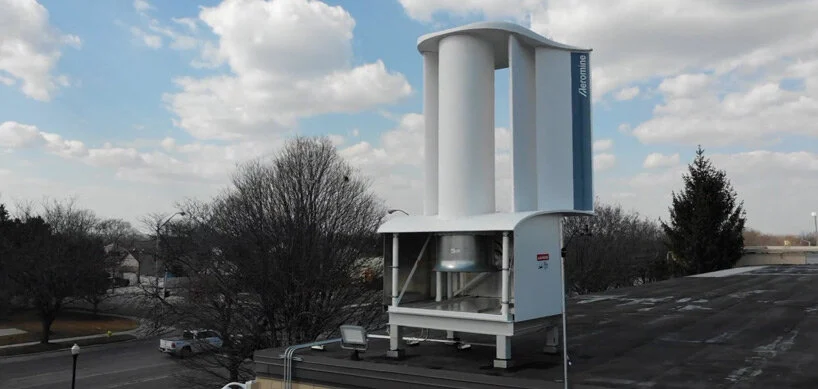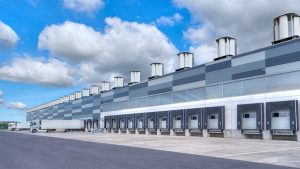Aeromine Technologies’ bladeless wind energy unit competes with rooftop solar as a local source of clean, built-in energy. The scalable “motionless” wind unit may produce 50% more electricity than rooftop solar at the same time.
The device’s primary function is to amplify and capture each building’s airflow using Aerodynamics like race car airfoils. The aerodynamic design collects and amplifies airflow at wind speeds as low as 5 m.p.h. The single unit uses 10% of the space solar panel and generates electricity round the clock. Aeromine states that the unique method is motionless and completely silent.
An Aeromine System typically consists of approximately 20 to 40 units. The units are commonly installed on a building’s edge facing the wind. Likewise, the company says the unit may reduce the energy storage a building needs and produce electricity in every weather condition. Rooftop solar are paired with the device holding a tiny roof footprint, boosting decarbonization and energy independence. In comparison, each device produces 5 kW AC of electricity, which is constant across time.
However, according to architecture 2030, buildings and the built environment account for approximately half of global carbon emissions. Building operations contribute about 27% of emissions. Whereas considering building materials and constructions, including other construction industry energy, it may consume the other 20%. It is an opportunity to make buildings more efficient and employ innovative technology to create emissions-free electricity.
Indeed, an Aeromine system is a game changer for the fast-growing rooftop power production business. The system will help corporations to accomplish their resilience, and sustainability goals, states CEO David Asarnow. In addition, Aeromine’s technology delivers wind energy to onsite generation, minimizing legacy constraints from spinning wind turbines and less efficient solar panels.
Moreover, BASF corporation is currently testing the Aeromine system at a production plant in Wyandotte, Michigan. The presented technology came into being through joint research of Texas Tech University and Sandia National Laboratories.
Read more:






 Netflix Launches “Profile Transfer” to Prevent Account Sharing
Netflix Launches “Profile Transfer” to Prevent Account Sharing